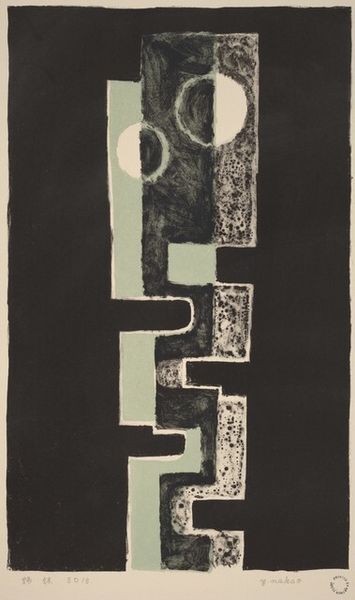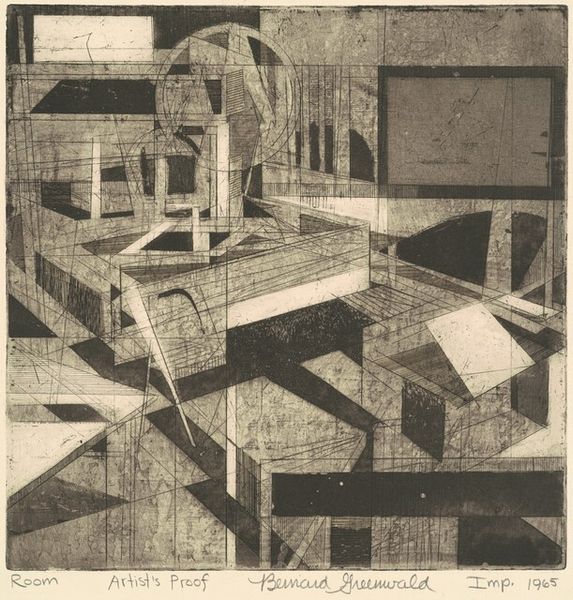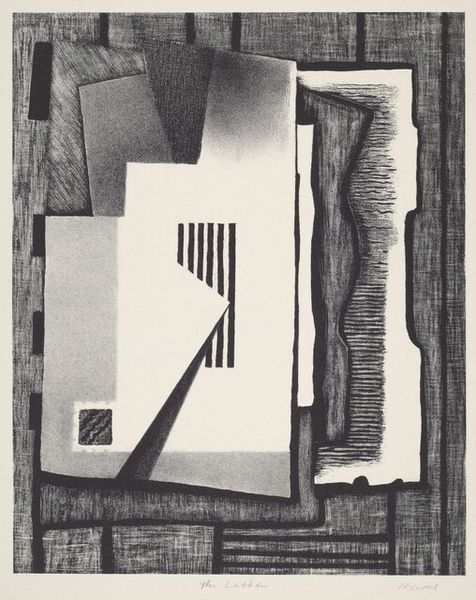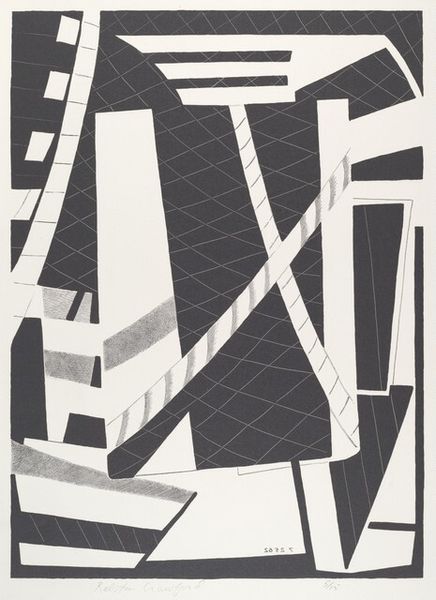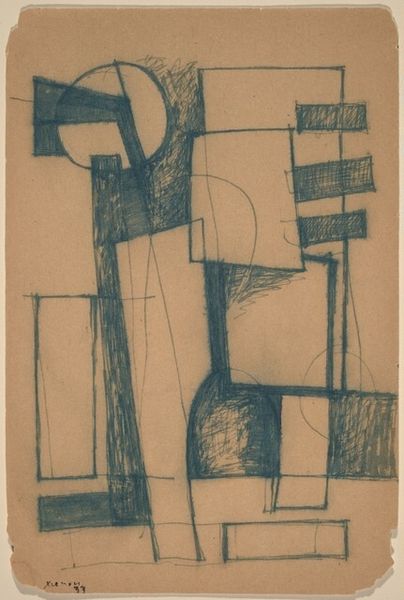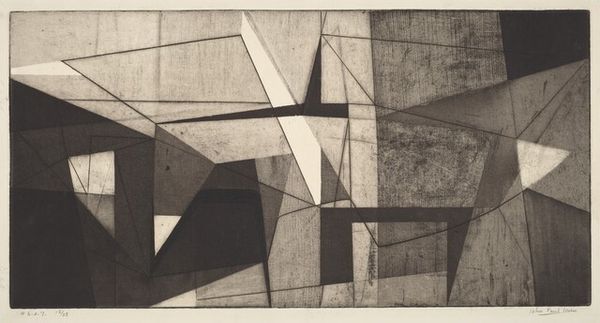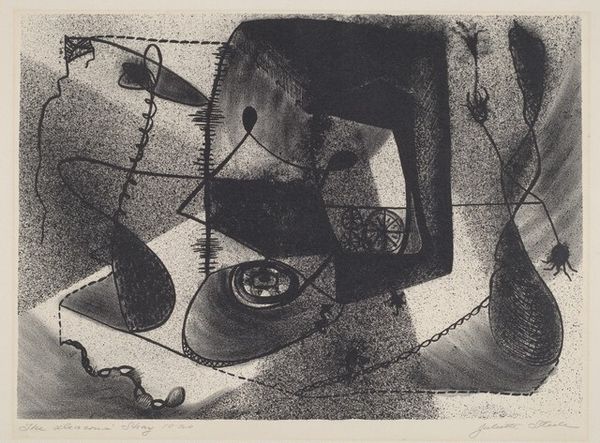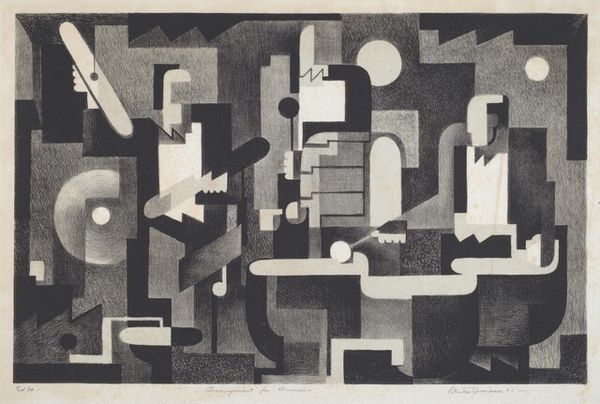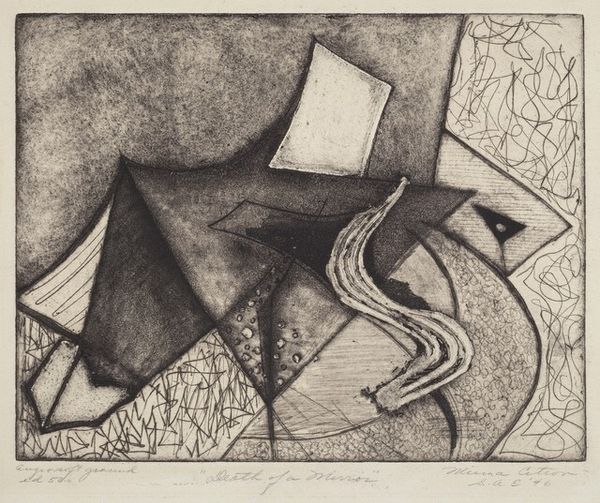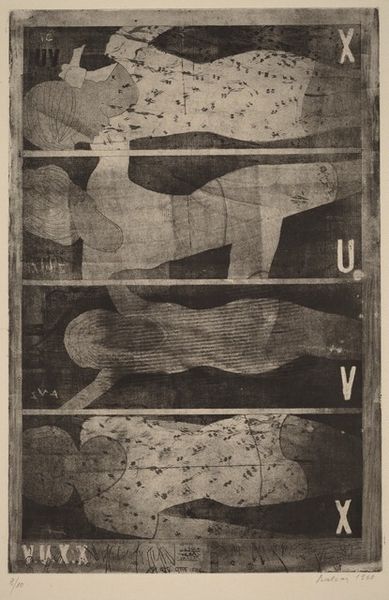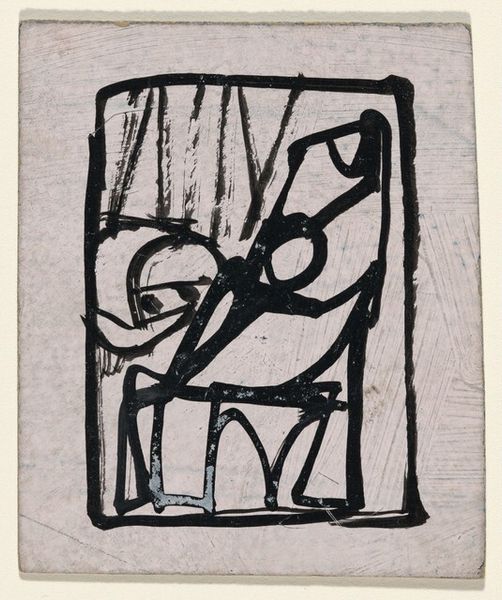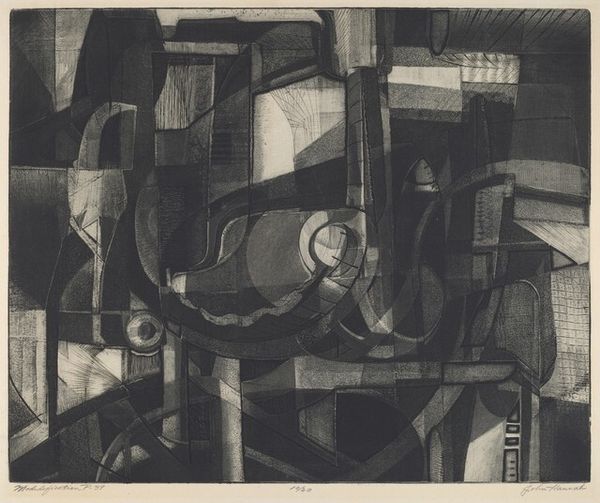
graphic-art, print, etching
#
graphic-art
# print
#
etching
#
geometric
#
abstraction
#
line
#
modernism
Dimensions: plate: 17.6 x 12.3 cm (6 15/16 x 4 13/16 in.) sheet: 25.1 x 16.6 cm (9 7/8 x 6 9/16 in.)
Copyright: National Gallery of Art: CC0 1.0
Editor: Here we have Fannie Hillsmith's "Abstraction of Stripes," an etching from 1946. I’m immediately drawn to how the stripes both define and disrupt the pictorial space. There's a real tension between order and chaos, but I'm not quite sure what to make of it. What do you see in this piece? Curator: It’s fascinating, isn’t it? Consider the cultural landscape of 1946. The world was grappling with the aftermath of World War II. Abstract art gained prominence as a means to express feelings words couldn't capture, often as a response to the perceived failure of representation itself. Looking at this, I'm wondering about the push and pull between the artist’s desire to create something orderly, with those very deliberate stripes, and the disruption, perhaps even a subconscious reflection on social upheaval, suggested by the off-kilter geometric shapes. How might the grid function both as a symbol of control and its potential collapse? Editor: So you're suggesting the abstraction could reflect a societal shift or unrest. The geometric forms almost look architectural. Do you think she intended to critique the structured environment through this fragmentation? Curator: Possibly, but more subtly than a direct critique. Many women artists were exploring abstraction, in part, to navigate a male-dominated art world. Hillsmith’s work complicates easy categorizations. Is it purely formal exploration? Or does it speak to something deeper about the experience of living in a postwar, patriarchal society, where personal expression was often limited, especially for women? What do you make of the "stripes," and what might they signify for you? Editor: I didn't think of the artist inserting herself as a woman in a modernist art scene, trying to find space and form. Considering all you’ve shared really expands my view! Curator: Absolutely. It reveals that art, even abstract art, can offer commentary about society, even when the artist isn't explicitly making political statements. We can appreciate that!
Comments
No comments
Be the first to comment and join the conversation on the ultimate creative platform.
